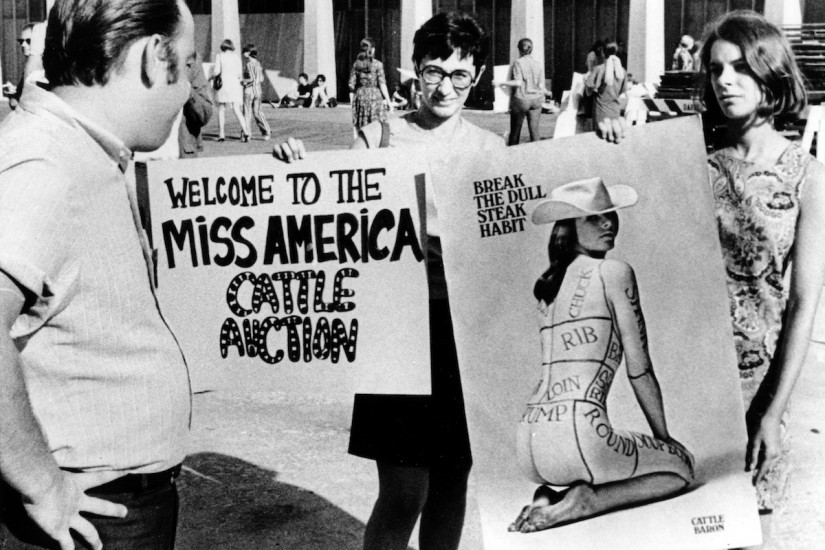On September 7, 1968, more than a hundred women gathered to protest on the boardwalk of Atlantic City, New Jersey. Organized by a recently formed group called New York Radical Women, the demonstration targeted an annual televised event, which, the women argued, served as a potent symbol of the country’s sexism: the Miss America beauty pageant. With a day of street theater, they announced the arrival of a new, more militant women’s movement—one with renewed significance in the #MeToo era.
On the boardwalk, women marched with signs reading, “Can makeup cover the wounds of our oppression?” and “If you want meat, go to the butcher.” One group crowned a live sheep the winner of the beauty contest, while another auctioned off a lanky, blonde Miss America effigy (“Step right up! How much am I offered for this number-one piece of prime American property?! She sings in the kitchen, hums at the typewriter, purrs in bed!”). In another act, the participants threw “symbols of oppression”—including girdles, high heels, and hair curlers—into a bin dubbed the Freedom Trashcan. (Contrary to the bra-burning myth invented by the media as a result of the event, no undergarments were incinerated.)
Finally, a small group acquired tickets and infiltrated the hall, briefly disrupting the pageant by unfurling a banner that read “Women’s Liberation” and chanting during one of the televised speeches. “It was the most wonderful celebratory mood,” Peggy Dobbins, one of the participants, said recently. “We knew we were on the right track.”
The protest became national news, catapulting the era’s new wave of feminist activism into public consciousness. As Carol Hanisch recounted, “When we read the morning papers, we knew our immediate goal had been accomplished: Alongside the headline of a new Miss America being crowned was the news that a Women’s Liberation Movement was afoot in the land and that it was going to demand a whole lot more than ‘equal pay for equal work.’ We were deluged with letters, more than our small group could possibly answer, many passionately saying, ‘I’ve been waiting all my life for something like this to come along.’”
Fifty years later—when we are governed by an alleged rapist who once owned a rival beauty pageant—the protest remains all-too relevant. It offers important lessons not only for those who, in the wake of #MeToo, are organizing against misogyny and harassment, but those who seek to understand how social movements can effectively build resistance.
